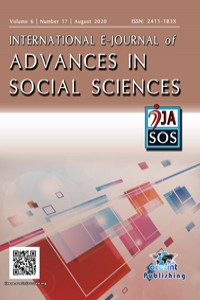Abstract
Thousands of traditional names make up a significant layer of the Chuvash language lexical system. Genetically, the Chuvash anthroponyms are divided into Chuvash, Tatar, Arabic, Iranian and Russian basic strata. The ethnic identity of the anthroponymic system is formed by the Chuvash original names. A two-stage naming system in the Chuvash language included both the main taboo names and the names that replaced them in everyday life. A significant layer of Tatarisms is singled out among the Chuvash anthroponyms. They compete with the Chuvash names. The Chuvash-Tatar kinship relations and the significant influence of the Tatar culture on the Chuvash in the post-Bulgarian period determine their use. Numerous Tatar and Iranian names have the Tatar roots. The Chuvash name-building on the basis of various combinations of the same components is possible due to the anthroponyms of Islamic origin, namely to the Arab-Iranian and Tatar units. Tatar, Arabic and Iranian names ensure the existence of a common fund of personal names in the Volga-Kama language union. The Russian-Orthodox anthroponymic subsystem mainly includes ancient Greek, Latin and proper Russian names. Being adapted to the peculiarities of the Chuvash language they have undergone significant phonetic, derivational and semantic changes. The Russian names of the 18th century that appeared in the Chuvash language are qualified as both Orthodox and pagan. They are an intermediate link between pagan and modern names which completely coincide with European Christian anthroponyms. The unique fund of the pre-Christian Chuvash names exists due to the onyms combination with various linguistic and genetic basis. It is the phenomenon of a different cultural reality.
References
- 9. Skvortsov M. I. (1968). Once Again about the Arabic-Persian Contribution to the Chuvash Vocabulary.
- 10. Yagafova E. A. (2009). Chuvash-Muslims in the XVIII – early XXI Centuries.
Abstract
References
- 9. Skvortsov M. I. (1968). Once Again about the Arabic-Persian Contribution to the Chuvash Vocabulary.
- 10. Yagafova E. A. (2009). Chuvash-Muslims in the XVIII – early XXI Centuries.
Details
| Primary Language | English |
|---|---|
| Journal Section | Articles |
| Authors | |
| Publication Date | September 14, 2020 |
| Submission Date | June 16, 2020 |
| Published in Issue | Year 2020Volume: 6 Issue: 17 |
Contact: ijasosjournal@hotmail.com
The IJASOS Journal's site and its metadata are licensed under CC BY
Published and Sponsored by OCERINT International © 2015- 2025


